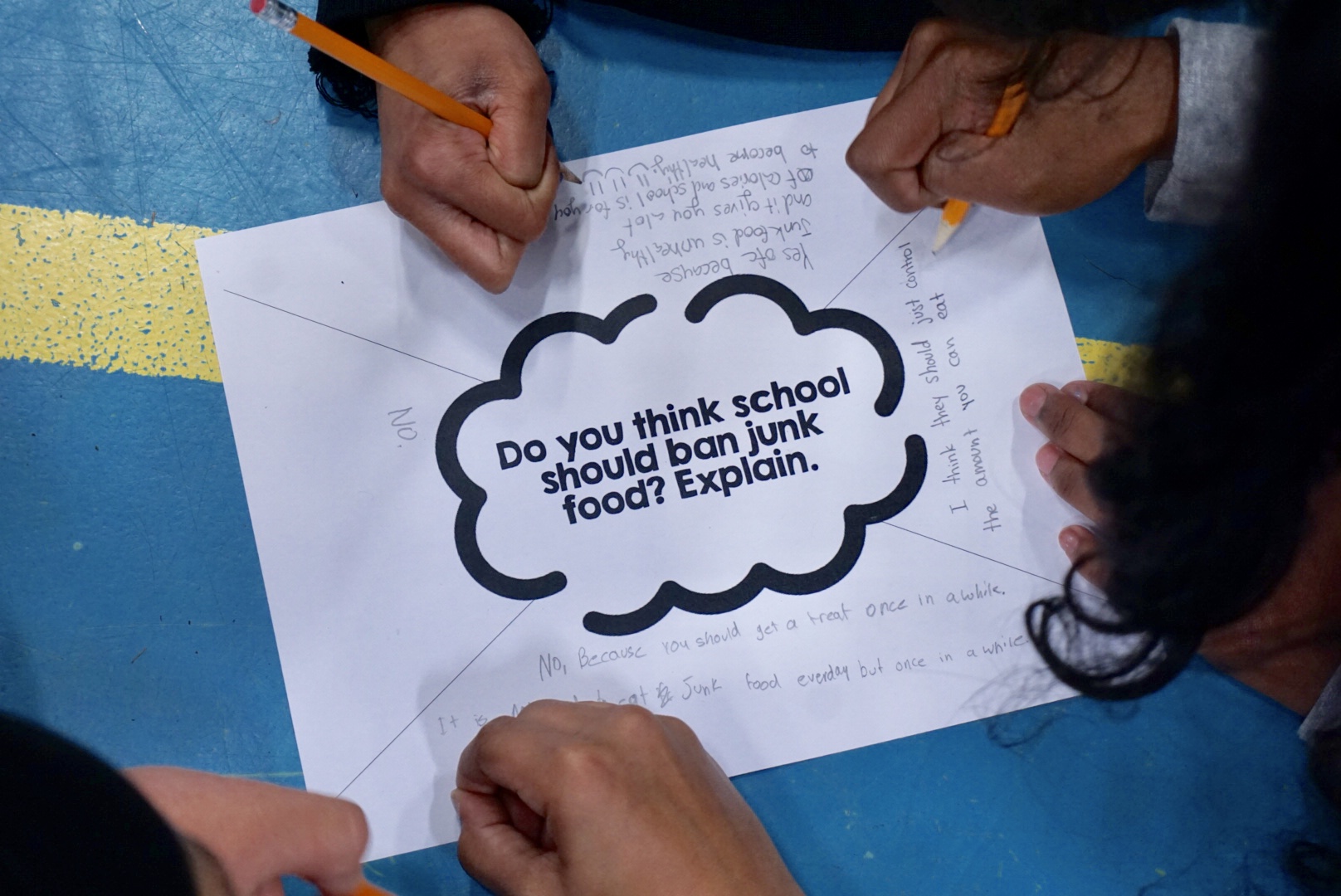Get Students Talking: Engaging Discussion Strategies
Four Easy Strategies for any classroom
I can't count the number of times I've told students to:
"Talk about the video."
"Discuss what you read."
"Share your thinking on that topic."
I'm constantly askings students to discuss. But it hasn't been until recently that I've begun guiding them on how they should be talking to each other (discussion protocol) and what exactly they should be talking about (discussion prompts).
This #teacherfail has cost my students and me a lot over the years. So many missed opportunities for students to share their unique insight and deepen their understanding of important topics.
Now whenever I design lessons, I outline a specific discussion protocol and write out thoughtful and engaging prompts. In this post, I'm sharing four of my favorite go-to discussion strategies.
1) Stand Up, Hand Up, Pair Up
Why I Love It:
- Quick and easy
- No prep beyond writing discussion prompts
- Encourages students to talk to many different classmates
How It Works:
- Share discussion prompts with students
- Give them time to think about the prompt. I like to have students write out their thinking either as a journal entry or short answer.
- Students stand up with their hand up signaling that they're ready to discuss.
- Students then pair up with a classmate whose hand is also in the air, and they discuss the prompt.
- When they're done, they high five and raise their hand and find a new partner.
2) X-Box Discussion
Why I Love It:
- Gives every student a voice
- Opportunity for deeper discussion
- Minimal prep
How It Works:
- Share discussion prompts on a worksheet.
- The worksheet features the prompt in the middle with a big X through the paper. The X creates four sections for writing.
- Ask students to read the prompt and write out their response silently.
- Then each student shares what they wrote.
- Once everyone has shared, students can then discuss the prompt as a group.
- To help guide this portion of the discussion, I share a few follow-up questions on the teaching PowerPoint.

3) Chat Stations
Why I Love It:
- Adaptable for any topic
- Great independent discovery
How It Works:
- The amazing Jenn Gonzalez outlines it in the video below:
- Generally, I give students scenarios to review or facts about a specific topic. Along with learning tasks and/or discussion prompts to help students relate the learning content to real life.
Think, Pair, Share
Why I Love It:
- Super easy
- Can add to any lesson
- No prep
How It Works:
- Present a prompt for students to discuss
- Give them a few moments to think about the prompt
- Ask them to pair up with a classmate (usually the person they're sitting next to).
- Once they're paired up, they share their thinking and discuss the prompt.
Bonus: Jenn Gonzalez offers great tips for using Think, Pair, Share on her blog. Like...
- Have an A student and a B student. Then throughout the discussion designate who should be speaking (this is a great idea to do with all strategies)
- Creating seating charts based on who will do well discussing in pairs.
Of course, there are so many other great discussion strategies you can use. These are simply the ones I use most often because they are minimal prep and easily adaptable. What about you? What are your go-to discussion strategies?



Free Intro to Health Unit Plans
We've got you covered! Get instant access to five free health lesson plans for in-person or digital instruction.
Hello. I'm Janelle!
A middle school health teacher turned curriculum developer (and #WAHM). I'm on a mission to share the easiest-to-teach, most impactful health lesson plans on the Internet. Because your time and energy is better spent on teaching and connecting, not on planning and prep.




